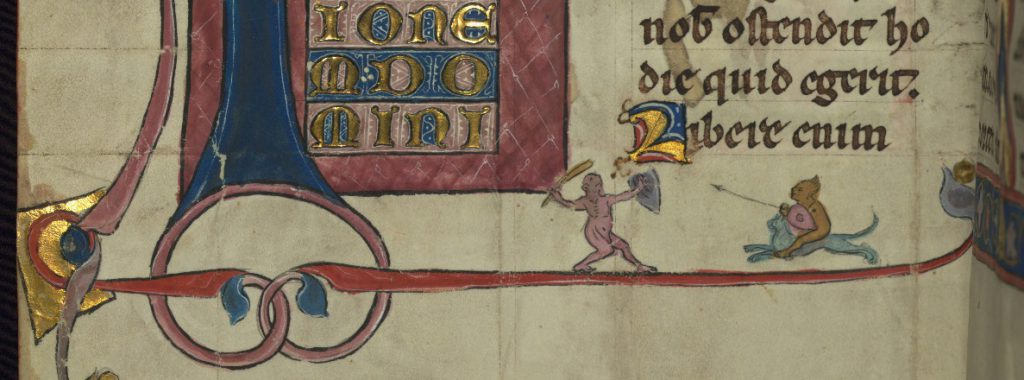2023 Pre-Symposium on “Intrepid Borders” before the Spring Symposium
March 9, 2023 in Uncategorized
Intrepid Borders:
Marginalia in Medieval and Early Modern Books
 Baltimore, Walters Art Museum, MS. W.148, folio 33v, detail. Image via Creative Commons.
Baltimore, Walters Art Museum, MS. W.148, folio 33v, detail. Image via Creative Commons.
A Virtual Lightning Talks / Half-Day Symposium
of the Research Group on Manuscript Evidence
co-organized by Katharine Chandler,
Jennifer Larson,
and Jessica L. Savage
Friday, 24 March 2023
2:00 – 5:30 pm E.D.T. (GMT-4) by Zoom
The Research Group on Manuscript Evidence invites you to attend our innovative half-day virtual symposium to be held on the afternoon of Friday, 24 March 2023. It features two sessions of Lightning Talks (between 15–18 minutes each) which have been selected from the Call for Proposals. Here is how we presented the Call:
With strong and plentiful responses, the Program has been selected, filling the afternoon.
This exploratory event about book marginalia and borders (including drolleries, glosses, inscriptions, and annotations) will kick off the Research Group’s virtual Spring Symposium to be held the next day on Saturday, March 25th.
As part of the RGME’s Theme for the Year 2023, “Materials & Access”, the pair of 2023 Spring and Autumn Symposia considers interlinked areas “From the Ground Up” (Spring) and “Between Earth and Sky” (Autumn). For information about the Spring Symposium and registration for it, see:
The set of Sessions on “Intrepid Borders” for the afternoon Pre-Symposium is co-organized by
Katharine Chandler, Jennifer Larson, and Jessica L. Savage.
Registration for “Intrepid Borders” is required, and can be made through its portal:
After you have registered, the Zoom link will be sent out shortly before the event.

Baltimore, Walters Art Museum, MS. W.148, folio 33v. Detail: Bottom, with fighting creatures. Image via Creative Commons.
Vision for the Lightning Talks
The borders of books are usually narrow places where reader-viewers of manuscripts touched, turned, and lingered on pages. As a space to develop writing and decoration, marginalia, or “things in the margin,” might be integral to the design of a manuscript, or their marks could be extraneous additions to the page.
Papers might explore the interaction of readers with texts through annotations and glosses, and investigate the many varied inscriptions and their purposeful inclusion in book borders. Papers might also zero in on the iconographic programs and decorative surrounds in manuscripts, which evolved over the late Middle Ages and into the early modern period, and which contain compelling visual evidence of the whimsical and fantastic.
